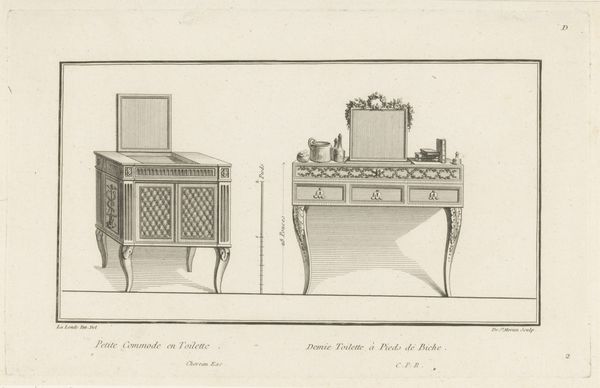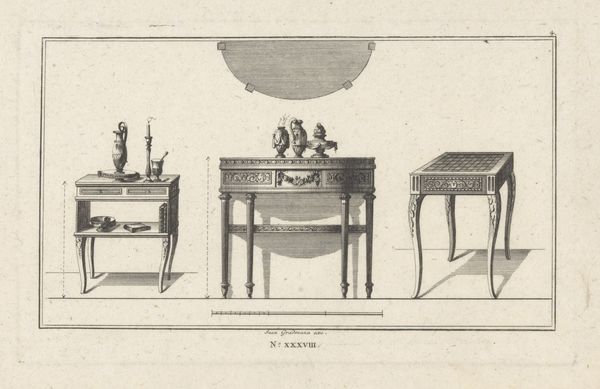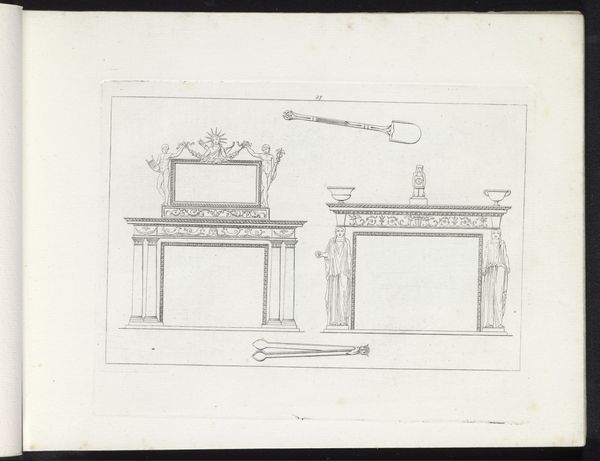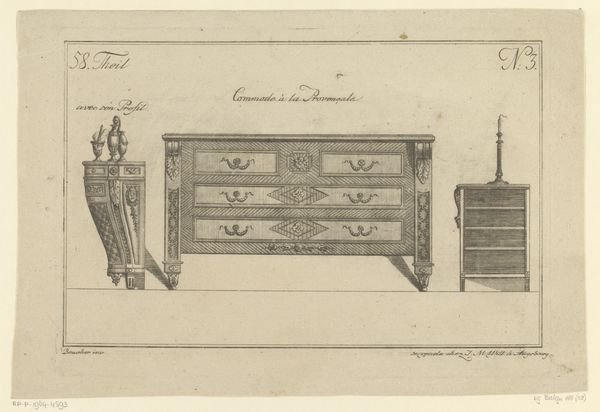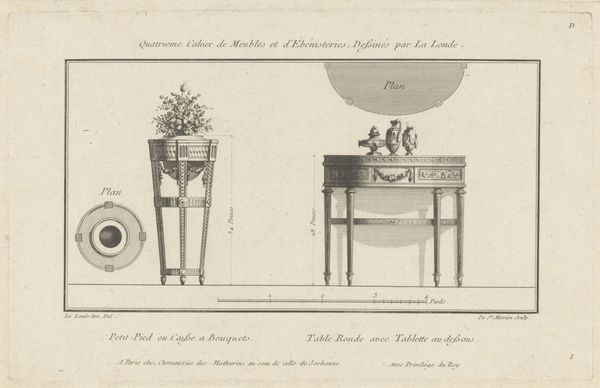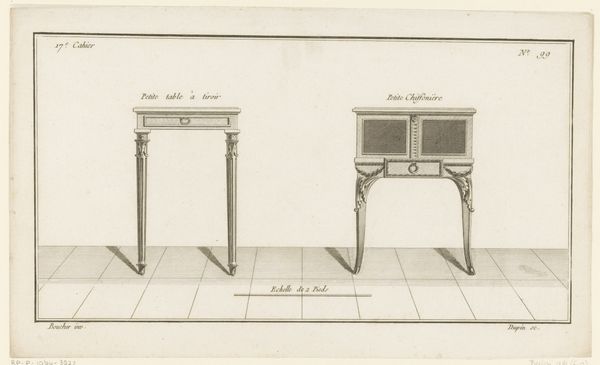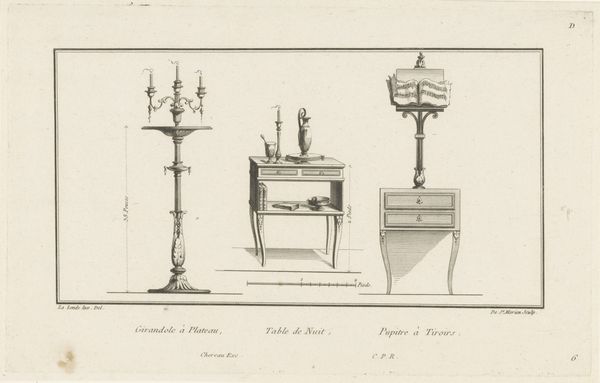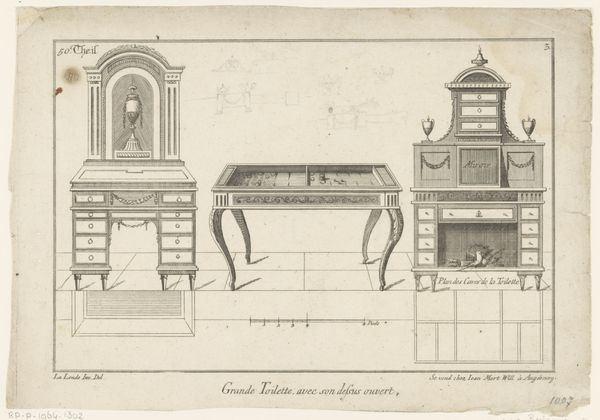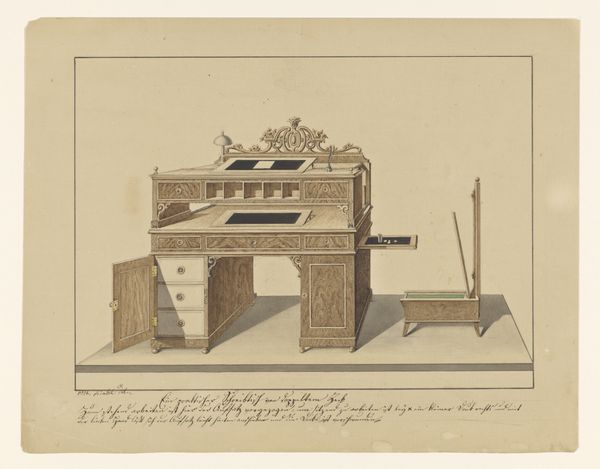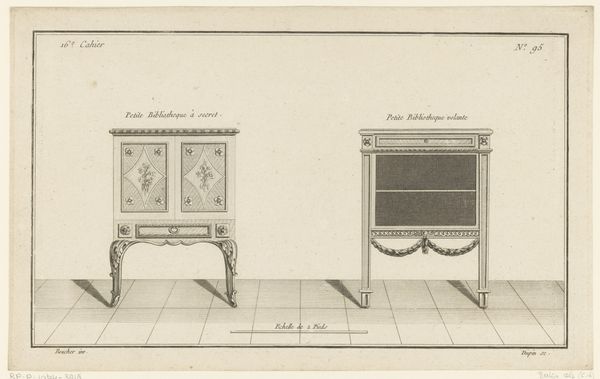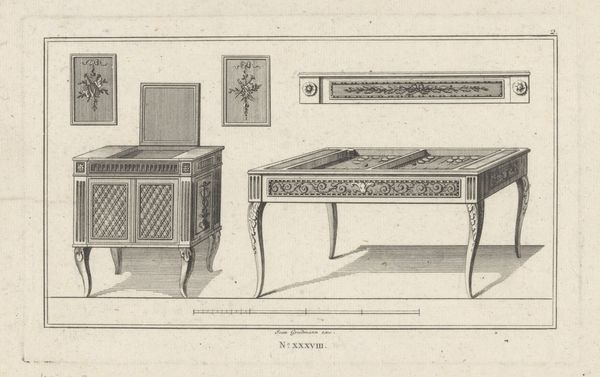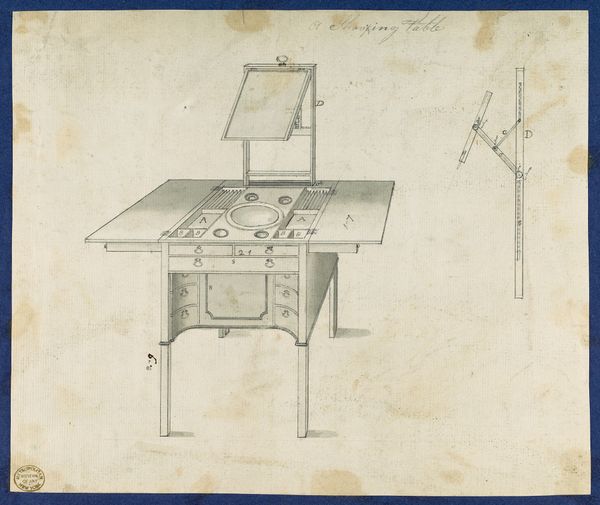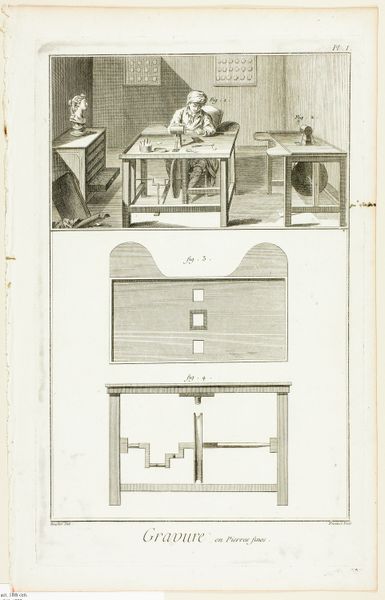
drawing, print, paper, ink, engraving
#
drawing
#
neoclacissism
# print
#
paper
#
ink
#
decorative-art
#
engraving
Dimensions: height 206 mm, width 295 mm
Copyright: Rijks Museum: Open Domain
Editor: This is "Commode, toilettafel en nachtkast," made after 1784 by an anonymous artist. It's a print - an engraving in ink on paper - depicting three different pieces of Neoclassical furniture. I'm struck by the almost clinical, architectural quality of the image, the precision. What story do you think it's telling about society and culture at the time? Curator: Well, these detailed depictions of furniture, circulated as prints, served a specific purpose beyond mere aesthetics. It shows us the rising consumer culture and how it helped fuel Neoclassicism, where this isn't about self expression but about social identity. These designs broadcasted status and refined taste. What is not stated also tells a lot of a story of economic inequalities in the 18th and 19th centuries, because such engravings would also shape consumption of home goods in more than one socio-economic sphere. Editor: So, almost like a design catalogue? And that ties into the social context, making these kinds of goods accessible to those who sought status. How would the design or artistic aspects affect the influence of these goods at the time? Curator: Precisely! The clean lines, the emphasis on symmetry, the references to classical antiquity… all these Neoclassical elements signal order, reason, and stability – values associated with the Enlightenment and embraced by the rising middle class, and how they shaped their sense of class. Imagine seeing this in a shop window, versus having this knowledge conveyed in other ways - did that accessibility factor change design itself, do you think? Editor: Definitely gives me a new way to consider how furniture functioned then, as not only utilitarian but as signals of one’s place in society. It's a kind of quiet, visual form of social currency. Curator: Exactly! And the wide distribution of prints like this solidified that function.
Comments
No comments
Be the first to comment and join the conversation on the ultimate creative platform.
